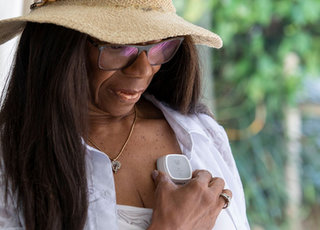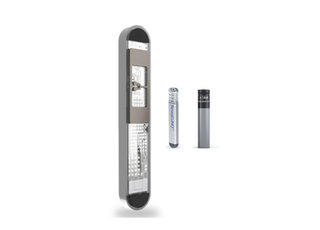
Trendwatch: The coming RPM revolution
By Kenneth Ellenbogen, MD
Director of Clinical Cardiac Electrophysiology and Pacing, VCU Health
Ken Ellenbogen, MD is the Director of Clinical Cardiac Electrophysiology and Pacing at the Virginia Commonwealth University medical campus. His academic, clinical and research efforts include an interest in newer, more effective ways to perform ablation and to develop methods for ablation of atrial fibrillation. He is involved in the development of new types of pacemakers and exploring the role of pacemakers in treating congestive heart failure and atrial fibrillation. Dr. Ellenbogen has also served as the Director of Data and Safety Monitoring Boards for a number of national and international clinical trials.
Wearable devices are the future of remote patient monitoring. Right now they are in their early days and they are getting better with each new iteration, but they still lack a lot of granular information. Some of their sensors are in effect a crude prototype of what their true future capacity might be and their algorithms at best estimate, but do not really detect, anything. One clear example of this are ECG bands and ECG sensors on smartwatches and fitness trackers: there is so much variability in their true positive rates across different brands and users that they should not be solely relied upon for diagnosis of arrhythmias in many cases, where the baseline and the inability to see waveforms with high fidelity may be absent. Similarly, the optical sensors used in many wearable devices to determine oxygen saturation by comparing how much red and infrared light is absorbed by the blood are somewhat “gimmicky” and not known for high accuracy.
What I believe will happen is that wearables in the future will take a different form than they have now. For the most part, I think they will not be something people wear on their wrist, but rather clothing that monitors their heart rate, oxygen saturation, glucose, and other vitals. For ECG monitoring in particular, clothing is a much better conduit than a wrist device of the electrical activity of the heart, because it enables contact points that cross the chest. Those metrics will then be transmitted to the user´s smartwatch – but the smartwatch itself will not be the primary data collector.
It is clear that people want their health data to be tracked and quantified when they exercise – and even when they don´t, which is why sleep monitoring sensors have become so popular and are frequently integrated into smartwatches. One reason for the explosion of wearables is that consumers and patients want more frequent health monitoring than that offered by traditional in-person doctor´s appointments; another reason is that they want to be able to access that information themselves and not just have doctors access it. In this sense and despite all their imperfections, wearable RPM devices have gone a long way towards democratizing healthcare.
Advances in RPM technology and the underlying AI algorithms will enable physicians in the future to diagnose people who have major medical problems before they get very sick. We will also see a pivot from purely consumer wearables – the majority of which currently are not FDA-approved as diagnostic tools and do not make strong claims about their clinical validity – towards devices that perform clinical-grade biometric data collection and more comprehensive data analysis. The wearables market as a whole will place much more emphasis on clinically useful data and become more precision-driven and more sophisticated.
Finally, I expect the software that powers these technologies will mature as well and be able to present the collected and analyzed data to people in crisp, understandable formats. Device-makers that internalize these coming trends and act on them are going to be the true winners in the coming RPM revolution.
References
- Mozaffarian D, Benjamin EJ, Go AS, Arnett DK, Blaha MJ, Cushman M, Das SR, de Ferranti S, Despres JP, Fullerton HJ, Howard VJ, Huffman MD, Isasi CR, Jimenez MC, Judd SE, Kissela BM, Lichtman JH, Lisabeth LD, Liu S, Mackey RH, Magid DJ, McGuire DK, Mohler ER III, Moy CS, Muntner P, Mussolino ME, Nasir K, Neumar RW, Nichol G, Palaniappan L, Pandey DK, Reeves MJ, Rodriguez CJ, Rosamond W, Sorlie PD, Stein J, Towfighi A, Turan TN, Virani SS, Woo D, Yeh RW, Turner MB. Executive summary: heart disease and stroke statistics–2016 update: a report from the American Heart Association. Circulation. 2016;133:447–454.
- Pilkerton CS, Singh SS, Bias TK, Frisbee SJ. Changes in cardiovascular health in the United States, 2003–2011. J Am Heart Assoc. 2015;4:e001650. DOI: 10.1161/JAHA.114.001650.
- Narula S, Shameer K, Salem OMAR AM, Dudley JT, Sengupta PP. Machine learning algorithms to automate morphological and functional assessments in 2D echocardiography. J Am Coll Cardiol. 2016;68:2287–2295.
- Mayr A, Binder H, Gefeller O, Schmid M. The evolution of boosting algorithms. From machine learning to statistical modelling. Methods Inf Med. 2014;53:419–427.
- Johnson KW, Shameer K, Glicksberg BS, Readhead B, Sengupta PP, Bjorkegren JLM, Kovacic JC, Dudley JT. Enabling precision cardiology through multiscale biology and systems medicine. JACC Basic Transl Sci. 2017;2:311–327.
- Shameer K, JohnsonKW, Glicksberg BS, Dudley JT, Sengupta PP.Machine learning in cardiovascular medicine: are we there yet? Heart. 2018;104:1156–1164.
- Sengupta PP, Shrestha S. Machine learning for data-driven discovery: the rise and relevance. JACC Cardiovasc Imaging. 2019;12:690–692.
- Lancaster MC, Salem Omar AM, Narula S, Kulkarni H, Narula J, Sengupta PP. Phenotypic clustering of left ventricular diastolic function parameters: patterns and prognostic relevance. JACC Cardiovasc Imaging. 2019;12:1149–1161.
- Gandhi S, Mosleh W, Shen J, Chow CM. Automation, machine learning, and artificial intelligence in echo
- U.S. Food and Drug Administration. FDA news release: FDA permits marketing
of artificial intelligence-based device to detect certain diabetes-related eye
problems. 2018. Available at: https://www.fda.gov/news-events/pressannouncements/
fda-permits-marketing-artificial-intelligence-based- devicedetect-
certain-diabetes-related-eye. Accessed May 24, 2019.






